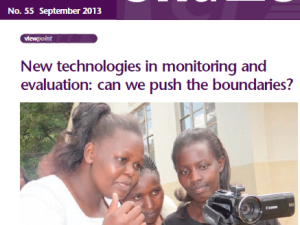Using digital technologies in monitoring and evaluation – INTRAC
Discussion details

This newsletter, produced by the International NGO Training and Resource Centre (INTRAC) discusses the use of digital technologies in monitoring and evaluation. It includes an example of the successful way in which digital technologies were used to carry out a baseline survey in a project with a focus on increasing incomes (in Tanzania). Read the newsletter here.
The newsletter presents some short case studies and argues that there are three main points to consider:
1) On the plus side: efficiency gains, better quality in the collection of quantitative data and mapping, the potential for stronger oversight and management, and reduction of fraudulent completion of questionnaires because you can really tell when the enumerator is actually in the village they are supposed to be in.
2) On the down side, nothing is more frustrating than when technology breaks down, weak IT security systems and staff capabilities affect the data, we end up tied to particular providers or software, or we end up reducing the data to meaningless numbers. If context is not well understood, nuance not recorded, or personal reflection not incorporated, then we lose a depth of comprehension.
3) Most importantly – and obviously – technology is no good without human thought behind it. If the design of the M&E system or the questionnaire is weak, if it is poorly tested, or if the software design or training is rushed, then the technology will not be helpful. But my experience is that the prospect of using digital technologies to design surveys and reports can force more care and attention in the design process, reflection on what you really want to collect, how and why.
Log in with your EU Login account to post or comment on the platform.